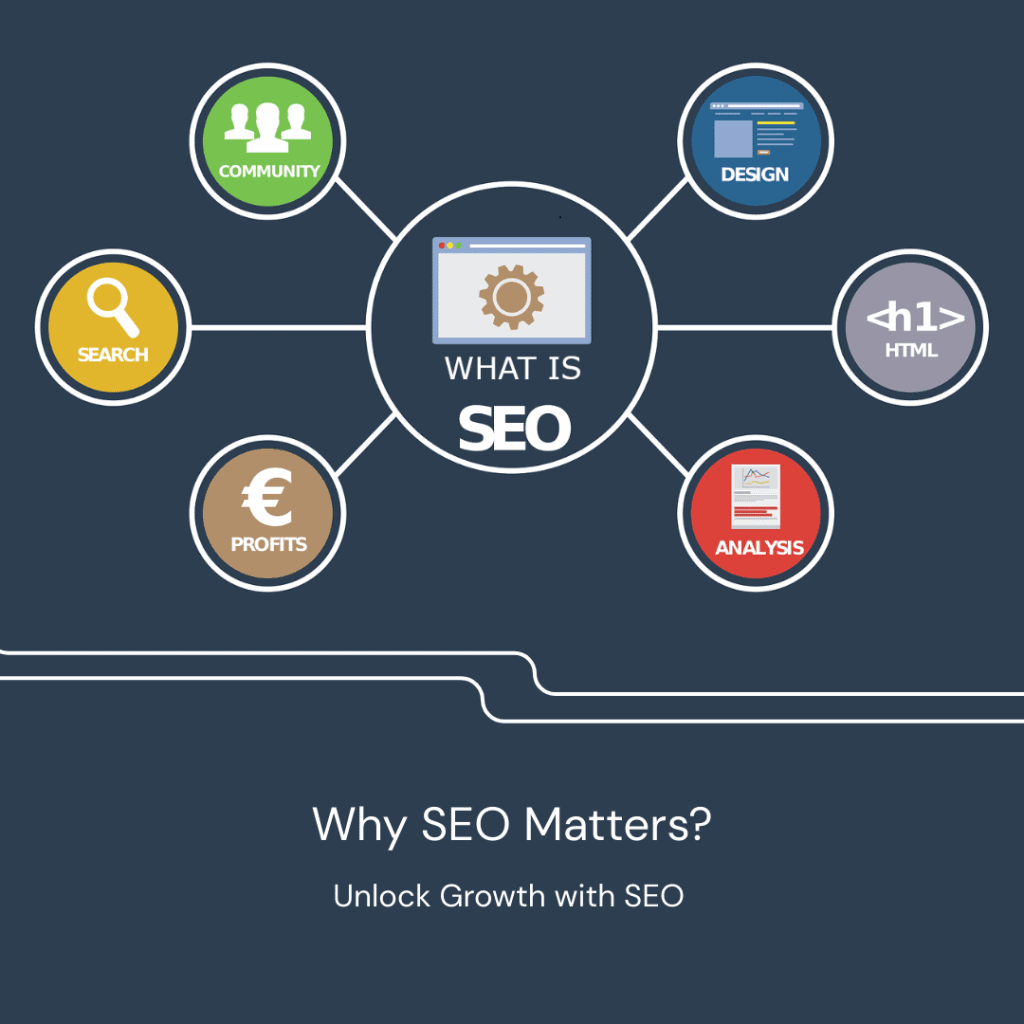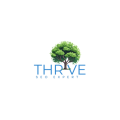
What is SEO and Why Its Matter?
SEO (Search Engine Optimization) is the practice of improving your website so it ranks higher in search engine results like Google. It involves optimizing content, structure, and performance to make your site more visible to people searching for relevant topics. Good SEO increases organic (non-paid) traffic, helps your content reach the right audience, and builds long-term online credibility. In short, it’s essential for driving traffic, gaining exposure, and growing your business online.
Benefits of SEO
One of the primary benefits of SEO is increased visibility. When your website ranks higher on search engine results pages (SERPs), it becomes easier for users to find you. The higher your site appears, the more likely it is that people will click on your content, leading to higher organic traffic. This is especially important because organic traffic is typically more sustainable and cost-effective compared to paid ads.
In addition to visibility and traffic, effective SEO also helps build trust with your audience. Websites that appear at the top of search results are often perceived as more authoritative and reliable. By optimizing your site with relevant, high-quality content and providing a positive user experience, you signal to search engines and your visitors that your site is trustworthy. This trust can lead to better engagement, more conversions, and stronger brand loyalty over time.
Moreover, SEO isn’t just about attracting more visitors; it’s about attracting the right visitors, people who are genuinely interested in what you offer and are more likely to engage with your content, make purchases, or return in the future.
How Search Engines Work?
Search engines like Google, Bing, and Yahoo are complex systems that help users find the information they need by providing the most relevant results. But how do they decide what content to show? The process explained into three main steps: crawling, indexing, and ranking. Let’s break down each of these in simple terms:
Crawling
Search engines use bots or “crawlers” (e.g., Googlebot for Google) to explore the internet. These bots move from one webpage to another by following links. Think of it like a librarian going through books and checking out the pages to find new or updated content. Crawling is the first step toward discovering new information on the web.
Indexing
Once the crawlers find a page, they analyze it to understand what it’s about. This involves reading the page’s text, images, videos, and other elements. After analyzing the content, the search engine adds the page to its index, a huge database of all the web pages the search engine knows about. Indexing is like storing all this information in a digital library so it can be easily accessed later.
Ranking
When you search for something, the search engine looks through its index to find pages that best match your query. Using complex algorithms, it ranks pages based on factors like relevance, quality, user experience, and the number of authoritative backlinks. The pages that best answer your search query are ranked higher and shown at the top of the results. Ranking is how search engines decide which pages are the most relevant to show.
Keyword Research: What Keywords Are and How to Choose Them
Keyword research is the foundation of any effective SEO strategy. It involves identifying the words and phrases that people are searching for online related to your website’s content. By targeting the right keywords, you can attract more relevant visitors and increase your chances of ranking higher in search engine results.
What Are Keywords?
Keywords are the terms or phrases that users enter into search engines when they’re looking for information, products, or services. For example, if someone is searching for “best running shoes for women,” those are the keywords they’re using to find relevant pages.
Keywords can be:
Short-tail: Broad, single words (e.g., “shoes”)
Long-tail: More specific, longer phrases (e.g., “best running shoes for women with arch support”)
Long-tail keywords often have less competition and are more likely to attract visitors who are ready to make a purchase or take action.
How to Choose the Right Keywords?
Choosing the right keywords involves a balance of relevance, search volume, and competition. Here’s how to choose them:
- Relevance: Ensure the keywords align with your content and audience’s intent. If you sell running shoes, make sure your keywords relate directly to that product.
- Search Volume: Look for keywords that people are actually searching for. However, don’t only go for high-volume keywords consider how relevant they are to your audience.
- Competition: Highly competitive keywords may be harder to rank for. Consider focusing on low-competition, long-tail keywords, which can bring more targeted visitors.
- Search Intent: Understand what people are looking for when they type in a particular keyword whether it’s information, a product, or a solution to a problem.
Tools for Keyword Research
To help you find the best keywords, there are several tools you can use:
Google Keyword Planner
A free tool that shows search volume and competition for various keywords, along with suggested keyword ideas.
Ubersuggest
A user-friendly tool that provides keyword suggestions, search volume data, and competition analysis, often with additional content ideas.
Ahrefs
A paid tool that provides in-depth keyword research, including keyword difficulty, click-through rates, and organic search traffic potential.
SEMrush
Another comprehensive paid tool for keyword research, offering detailed keyword analysis, SERP features, and more.
AnswerThePublic
A tool that generates keyword ideas based on real user questions and search queries.
On-Page SEO
On-Page SEO involves optimizing individual web pages to improve rankings and traffic. Key elements include title tags, meta descriptions, header tags, and image alt text. Proper keyword placement and clear content structure help search engines understand your content and improve user experience.
Technical SEO
Technical SEO focuses on optimizing your website’s backend to help search engines crawl and index it effectively. Key aspects include site speed, mobile-friendliness, secure connections (HTTPS), and having a clear XML sitemap. These elements improve performance, user experience, and search visibility.
Off-Page SEO
Off-Page SEO refers to actions taken outside your website to improve its search engine rankings. The most important factor is backlinks, links from other websites to yours. High-quality backlinks boost your site’s authority and trust, which can improve rankings. Tactics like guest posting, link building, and sharing content on social media help earn valuable backlinks and grow your online presence.
